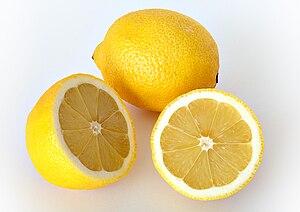A food developer urges resisting sweet lures and braving taste shocks, new cuisines and despised dishes
By BARB STUCKEY
As someone who develops new food products, I've been a professional taster for 16 years. I love my job, but I'm constantly frustrated by the unwillingness of most Americans to try foods that challenge their palates. (click below to read more)
The tongue is a unique muscle. The best way to exercise it, if you want to make the most difference to your waistline, is not to flex or fatigue it, but to stretch it. Expanding our repertoire of foods isn't just about exploration and new pleasures. It's also the first step toward eating a broader, healthier diet.
We are born loving sweetness, so we heap sugar into our lattes and drown our Chinese food in sweet sauces. But constantly indulging our craving for sweetness has an insidious effect. With each new overly sweet food that we consume, whether it is high in calories or not, we dull our palates to other tastes and flavors, especially those of nutritious fruits and vegetables.
We also may be altering our brain chemistry by eating more and more sweeter and sweeter foods. New research shows that the excessive consumption of calorically dense foods changes the way that our brain responds to future foods. The effect is akin to a drug addict's need for more and more heroin to satisfy his craving.
Experts in food neophobia—the fear of new food—have shown that it can take five to 10 attempts at trying something before you reach the point where you don't reject it outright. That's a lot of soapy cilantro to get down the hatch. But patience pays off on the joyous day when a child realizes that she kinda, sorta doesn't hate broccoli any more.
Here are some exercise tips…for your palate:
1. Eat More Bitter Foods. We're all born with an aversion to bitterness, but our levels of sensitivity vary greatly. Some kids will eat broccoli from the get-go. It may taste one-third as bitter to them as it does to the child who tests your very last nerve at the dinner table. You can usually tell who is the tolerant taster (that is, the one with the less sensitive palate) and who is the hypertaster ("I only eat white foods"), but you can coach and nurture them both into being open-minded eaters.
One study found that only 5% to 8% of the calories we eat are bitter. But the compounds that make foods taste bitter (carotenoids in sweet potatoes and spinach, flavonoids in cranberries and kale, polyphenols in wine) also make them good for us. Consider the initial taste shock of bitter foods such as cranberries, cocoa and kale to be positive, rather than negative. Bitter = healthful.
2. Try Something New. At a restaurant, order something you would never cook at home. Instead of recoiling at the smell of something foreign and pungent, get to know it better. I used to abhor the very smell of canned tuna. That was before I landed a canned-tuna client and had to taste it every week for four years. These days I'm an aficionado of good (healthy) tuna.
3. Do a Hated Horizontal. Pick a food that you hate but know you should eat more often, and teach yourself a bit about it. By sampling across a whole category of food—beans, for instance, if they are your most hated food—you are more likely to notice and appreciate the differences in textures, colors, flavors, tastes. Wine tasters call this a horizontal tasting. Find your least-hated bean and eat them once a day for a week. At the end of the week, if you still hate them, you're free to take a pass.
4. Eat More Ethnic Food. There's nothing more enjoyable than using the unfamiliar flavors of Vietnamese, Lebanese, Afghan and other ethnic food to exercise your taste buds and olfactory anatomy.
5. Quiz Yourself. I keep a couple of spice jars on my counter with the labels obscured. Every now and then, I pick one up, stick my nose in it, and see if I can identify it. At first I was terrible at the task (and I'm a professional taster!). Now I've gotten fairly good at it. With skills like this, you'll be looking for ways to flex your palate.
Delicious flavor starts with good ingredients. These provide varied textures, a backbone of balanced basic tastes (sweet, sour, bitter, salty and umami) and aromatics that give it beauty. Too much sweetness and not enough bitterness make food taste flabby. And that is what we've become: a nation of flabby palates. It isn't surprising that the rest of our physiques are flabby, too.
—Ms. Stuckey, executive vice president of food-and-beverage development firm Mattson, is the author of "Taste What You're Missing: The Passionate Eater's Guide to Why Good Food Tastes Good."


No comments:
Post a Comment